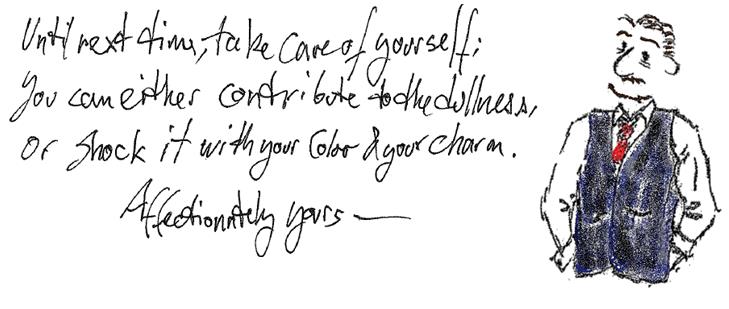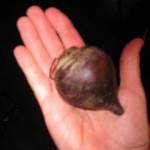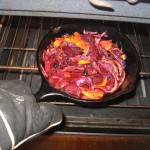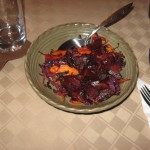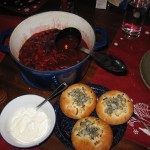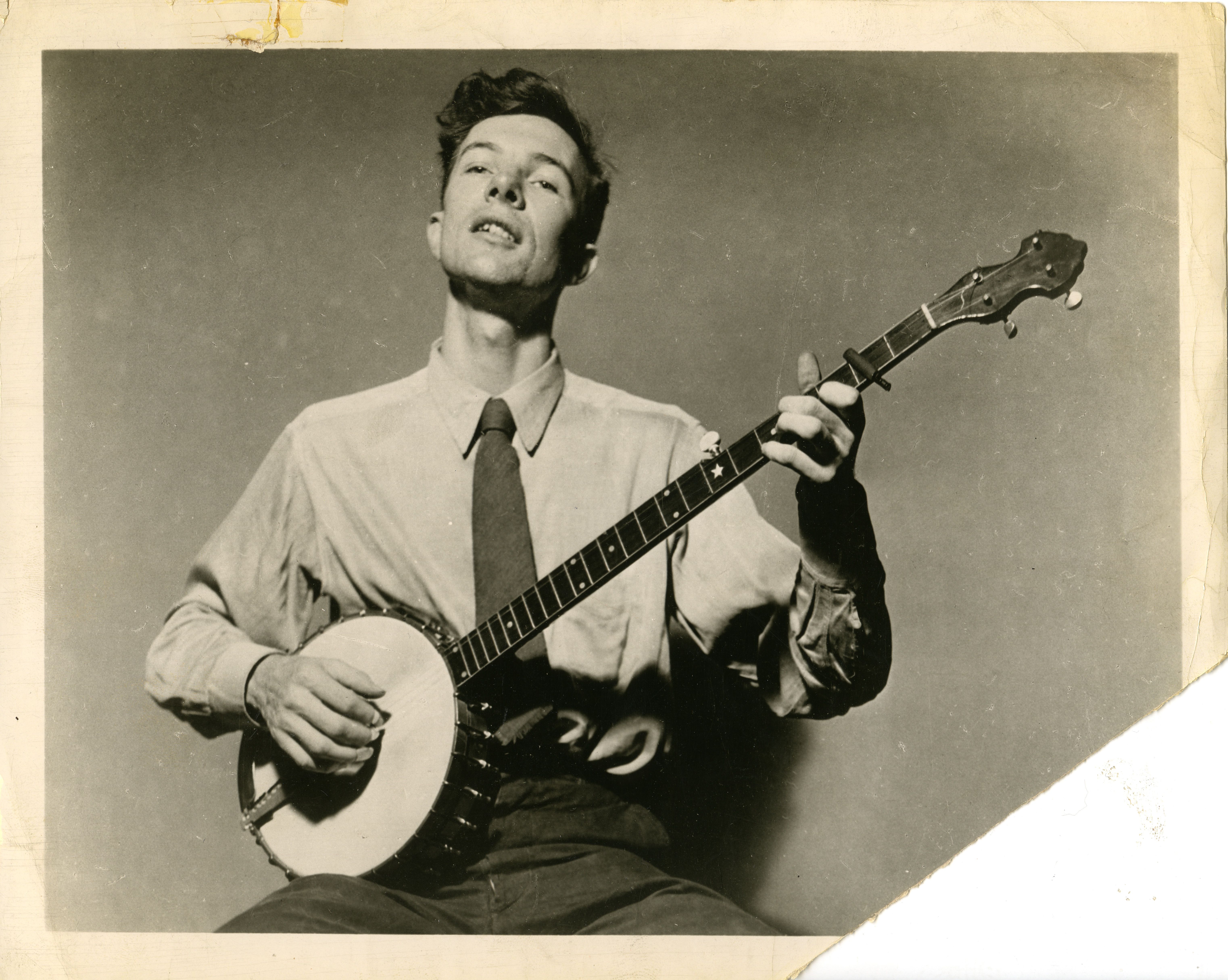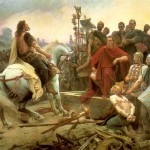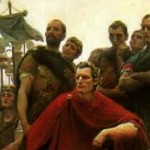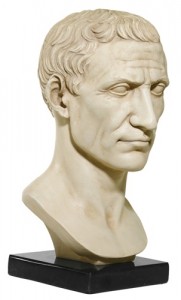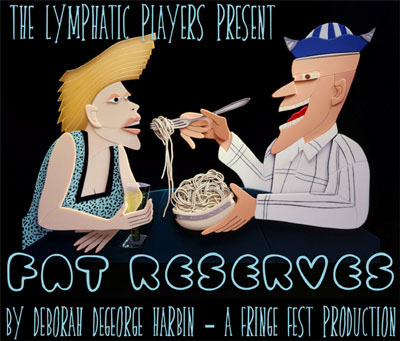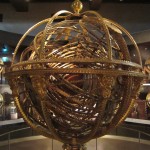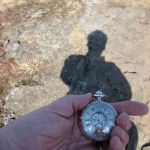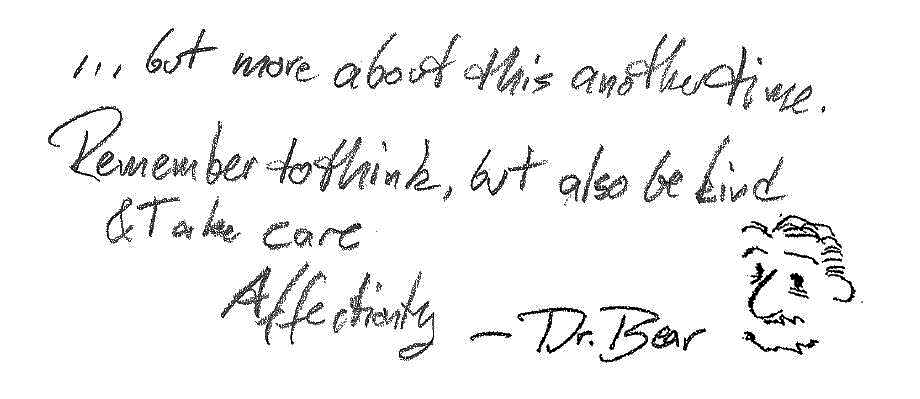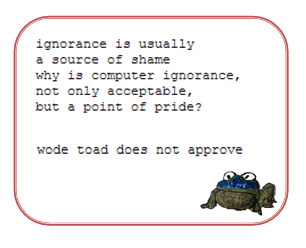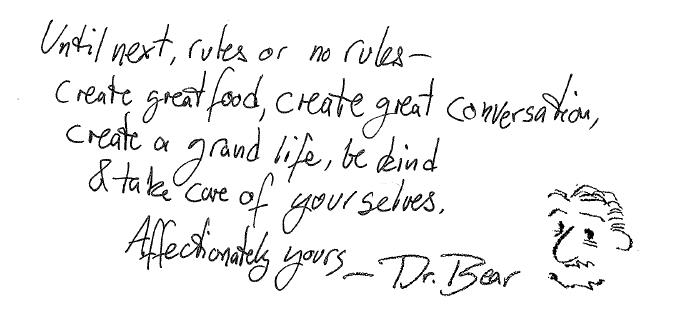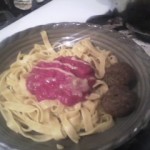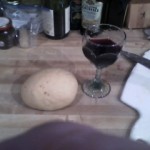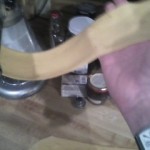Ingredients:
for the cake:
- 2 1/2 cups all-purpose flour
- 3/4 cup powdered chocolate
- 1 tsp. baking powder
- 1/2 tsp. salt
- dash cayenne pepper
- dash ground cinnamon
- 1 cup red wine
- 1/2 tsp. baking soda
- 1 cup dark molasses (not black strap)
- 1 cup packed dark brown sugar
- 1 cup granulated sugar
- 3 large eggs
- 1/2 cup softened butter
- 1/2 cup dark chocolate chips
for the cherry butter-cream frosting:
- 2 egg whites
- 1/2 cup sugar
- dash vanilla
- 12 Tbsp softened butter
- 1 cup dried cherries
- 2 Tbsp unsweetened cherry juice
- 1 Tbsp Kirsch (cherry brandy)
for the chocolate ganache glaze:
- 1/2 cup heavy cream
- 1 1/2 cups chocolate chips
- 1 Tbsp butter
- slivered almonds to taste
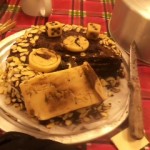 Part the First: the Cake
Part the First: the Cake
Step 1, Prepare ye the way: Pre-heat the oven to 350, grease & flour the pan or pans, line with parchment covered with almond slices if you like; I think this makes one Bundt cake, two smaller cakes and two or three loaves–smaller is actually better, since it can take forever to cook in the middle.. Also assemble all the ingredients on the counter.
Step 2, sifting the dry ingredients: In a large bowl, sift the flour, chocolate, baking powder, salt, cinnamon, and pepper. Set aside.
Step 3, mixing the wet ingredients: in a medium saucepan (leave room; there will be foam), heat the wine–not boiling, but hot. Take it off the burner, and carefully (!) add the baking soda (this is like the elementary school volcano experiment, but also like my soft pretzel/laugen recipe), whisking it smooth. After the foaming subsides, whisk in and dissolve molasses, the brown and white sugars, and the butter, and then, as it cools, the eggs.
Step 4, combining: Add the wet ingredients to the dry ingredients, maybe about a third at a time, mixing thoroughly. You don’t want pockets of dry, floury ingredients.
Step 5, putting it in the pan/pans: Add half the mixture to the prepared pan/pans, sprinkle this with half of the chocolate chips, then pour in the rest of the mixture and sprinkle with (you guessed this, didn’t you) the rest of the chips. They should sink into the batter.
Step 6, pop it in the oven for baby & me: bake the pans at 350 for 35 minutes to an hour, depending on the size of pans you chose, or until you can stick a toothpick in it and pull it out without it being covered with batter. Take it out, let it sit for a minute or so, then take it from the pan onto a wire rack to cool all the way.
Part the Second: the center frosting
Step 7, cherry-ho! in a mixer, combine the cherry ingredients and cop and puree until as smooth as possible, let this sit–the cherries should absorb the mixture so it isn’t too wet.
Step 8, sugar and egg whites: In a big bowl over a pot of boiling water (yes, sort of like a double boiler, but not as hot), whisk the egg whites and the sugar together until the sugar is no longer grainy, and the egg whites begin to whiten.
Step 9, mix and whip: add the mixture to a mixing bowl, and whip it until peaks begin to form and the mixture almost doubles., add the vanilla, and slowly add the butter, then the cherry mixture. Beat to frosting.
Step 10, stuffing: slice the cake or cakes into several layers, how many depends on how ambitious you are and how the cake holds up. I suggest 3. Frost the bottom slice with the cherry-butter-cream frosting, cover with the next & continue. Finally, top with the top, and shape the sides until smooth.
Part the Third: the ganache
Step 12, so rich and decadent: place the chips in a bowl, and heat the cream in a pan. Have the butter handy.
Step 13, more whipping: when the cream begins to boil, turn off the heat and pour it over the chocolate. As the chocolate melts, whisk it smooth. Add the butter and whisk.
Step 14, glazed and confused: pour the chocolate over the cakes, spreading with a spatula as needed. Do this quickly, since the chocolate will thicken pretty quickly. After it is all covered and smooth, you may cover with the almond slices, or just dust the edges with the almond slices. I left the top blank, and then decorated it with marzipan shapes and cyphers (ALEA IACTA EST).
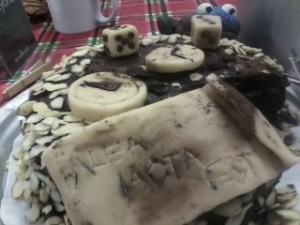
Step 15 share: Surprise a friend or mystify a co-worker. Serve for afternoon coffee with someone you love, deliver to a college student, enjoy life. Like life, this is rich; it is bitter & dark, but also intense and sweet (like some hearts…
Like this:
Like Loading...

 me more darkness, pain, and meaninglessness than my nihilistic poser mind could have ever imagined.
me more darkness, pain, and meaninglessness than my nihilistic poser mind could have ever imagined.